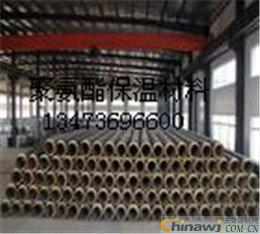Polyurethane insulation jacket tube production process? Dacheng Xiangdong Insulation Refractory Material Factory – 13473696600, 15731614448. Polyurethane foam insulation pipes are widely used in various industries due to their excellent resistance to corrosion and aging. This makes them highly demanded in the market, especially for applications requiring long-term insulation performance. The production of polyurethane insulation pipes involves careful planning and precise execution to ensure quality and durability.
The manufacturing process typically begins with preparing the inner pipe and outer sleeve. These components must be aligned properly using specialized equipment to maintain concentricity. Proper sealing is essential to prevent any leakage of the foaming material during the injection process. For shorter insulation sections, the slurry can be poured vertically, while longer sections are often filled in an inclined position to allow proper flow and foaming.
Depending on the formulation and project requirements, the injection can be done from the top or bottom. In cases where the pipe is very long, the mixing head delivers the slurry into the lower part of the gap, and as the filling progresses, the pipe is gradually withdrawn. This method is generally suitable for insulation layers with a thickness of less than 3mm.
For large-diameter and long-length casing pipelines, horizontal direct infusion is commonly used due to practical constraints such as material properties and site conditions. The specific processing method must be tailored to the application to ensure optimal performance and reliability.
During construction, several key precautions should be followed:
1. The trench should be leveled and kept dry, with a fine sand cushion of approximately 200mm in thickness at the base. The sides and top of the insulation pipe should also be covered with at least 200mm of sand to protect the outer casing and fill gaps effectively.
2. After installation, a hydraulic pressure test at 1.5 times the working pressure is required. Once the test is passed, the joint foaming treatment should be performed. This includes cleaning the steel pipe surface, insulating ends, and overlapping areas of the outer casing to remove any moisture, oil, or impurities. Foaming should be done when the ambient temperature is above 10°C.
3. For one-time compensation direct burial pipelines, preheating according to design specifications is necessary. The temperature should be maintained until the compensator is installed or the backfilling is complete.
4. When the pipeline enters a building or trench, a wall bushing should be added, and a fixed pier should be placed at the unearthing end.
5. Backfilling should be done in layers and compacted thoroughly. The quality of the backfill directly affects the safe operation of the pipeline, so it must be carefully managed.
For more information about polyurethane insulation jacket tubes, contact Dacheng Xiangdong Insulation Refractory Material Factory at 13473696600 or 15731614448.
Http://news.chinawj.com.cn

Submission:

Outdoor Sauna Room
Outdoor sauna, also known as a garden sauna or backyard sauna, is a small structure designed for relaxation and wellness purposes. It is typically made of wood and is placed in an outdoor setting, such as a garden or patio.
The outdoor sauna comes in various shapes and designs to suit different preferences and space availability. The traditional barrel sauna is one of the most popular designs for outdoor saunas. It resembles a large barrel, with a rounded shape and a curved roof. The barrel design is not only aesthetically pleasing but also helps with heat circulation and insulation. And the Cabin Style Sauna has a rectangular or square shape with a pitched roof. This design resembles a small cabin or hut. The cabin-style sauna offers a cozy and rustic feel, perfect for blending in with natural surroundings.
Outdoor Sauna Room,Wooden Sauna Room,Barrel Sauna Room,Outdoor Barrel Sauna
Foshan Nanhai Halo Sanitary Ware Co., Ltd. , https://www.halospas.com
 Submission:
Submission: 
![<?echo $_SERVER['SERVER_NAME'];?>](/template/twentyseventeen/skin/images/header.jpg)